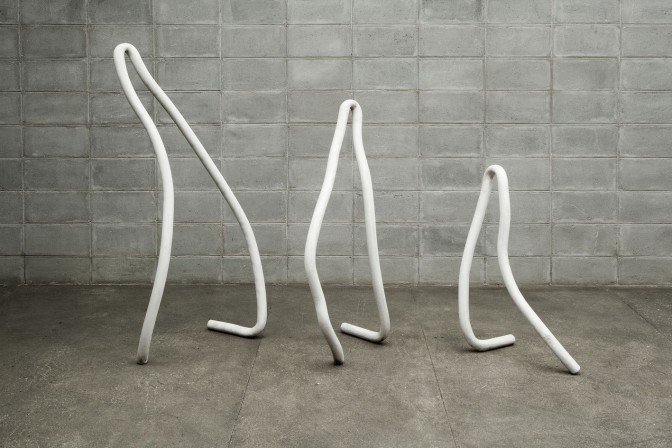Tomie Ohtake
Imperfect Geometry
29 September - 12 November 2016
White Rainbow is delighted to announce ‘Imperfect Geometry’, a solo exhibition by Japanese-Brazilian painter and sculptor Tomie Ohtake (1913-2015). A celebrated and household name in Brazil but under-recognised in Europe, this is Ohtake’s first solo exhibition in the UK in over 20 years.
Ohtake moved from her native Kyoto to Sao Paolo in 1936, where she lived and worked until the end of her life. Her career as an artist began at the age of 37, when she became a member of the Seibi group, which brought together artists of Japanese descent. She immersed herself in an exploration of abstraction first in paint, and expanding into printmaking and sculpture in later years. She worked until the end of her life at 101.
A leading proponent of an informal, gestural and lyrical style of painting, Ohtake gradually moved away from the prevailing strain of geometric abstraction in Brazil. Despite a close connection to artists and critics such as Mira Schendel, Willys de Castro and Mario Pedrosa among others, Ohtake developed her own visual language, fusing the spiritual dimension of Zen Buddhism with Western phenomenology. Throughout her career Ohtake eschewed metaphor and referent; the process of making and experiencing the work was a central concern.
In Ohtake’s later career, as her status and recognition grew, the artist realized a number of ambitious public sculpture projects across Brazil and Japan. Parallel to this, Ohtake began to create smaller line-based sculptures, whose sinuous forms hover between movement and repose.
Alongside these sculptures, Ohtake began to create monochrome paintings between 2013 and 2015, which saw her apply thick layers of paint, resulting in evocative lines and shadows. Ohtake’s work has been widely discussed and theorized by leading critics such as Paulo Herkenhoff, but the relationship between her painting and sculptural practice remains underdeveloped.
By relating Ohtake’s monochrome paintings to her line sculptures – none of which have ever been shown in Europe – ‘Imperfect Geometry’ highlights how Ohtake explored line, shadow and light across two and three dimensions.
Back to list
